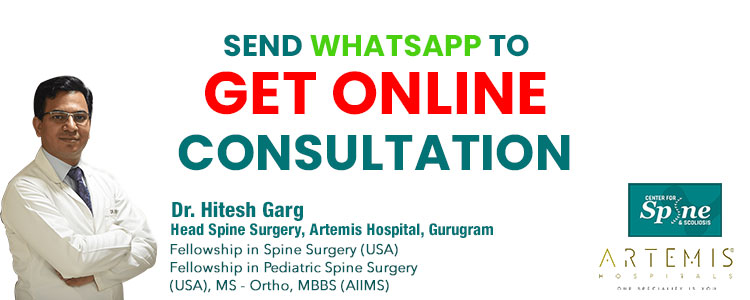
In children who are still growing, it is advised to wear a brace around the torso which can stop the curve from getting worse. They're usually made of plastic or other synthetic material. Many kids wear have to wear them 24 hours a day. It does not hamper the daily routine or activities of the child and it can't be seen under the clothes.
It is very effective for flexible deformities of idiopathic scoliosis of small/medium curve. Braces are custom made for the child after taking the measurement and adjusting to the correction required. It is normally changed every 6 months as the child grows in length and the curve reduces.
Non fusion techniques like growing rods are specially indicated for idiopathic and congenital scoliosis. It is a minimally invasive procedure which allows growth of the child as well as curve correction. Non Fusion techniques may involve magnetic or non magnetic growing rod. The advantage of using magnetic growing rod is that the distraction can be done as an OPD procedure without the need for surgery every 6 months.
In this operation, your surgeon puts pieces of bone or a similar material between bones in your spine to fuse them. They use the implants (screws and rods) to hold the bones in place until they grow together, or fuse as one segment. This kind of surgery can decrease the angle of the deformed curve in your spine as well as keep it from getting worse.
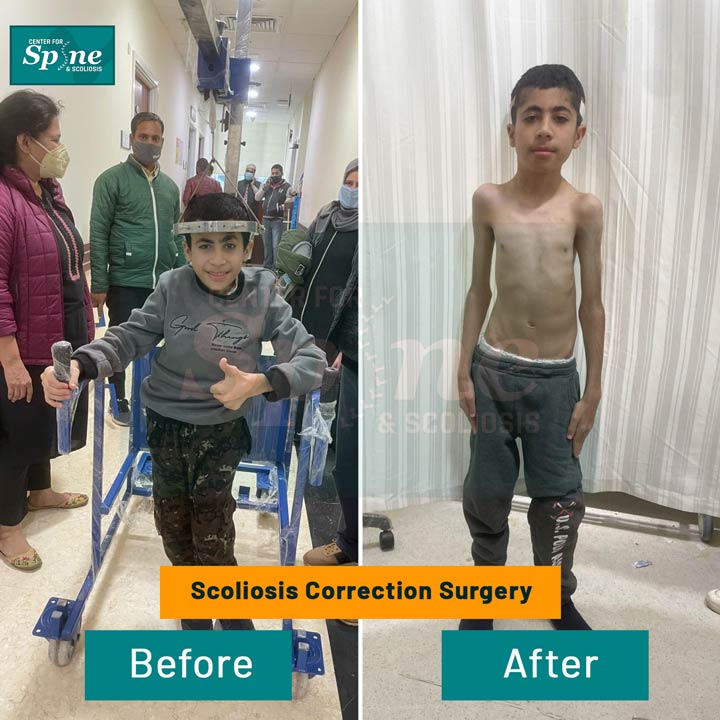
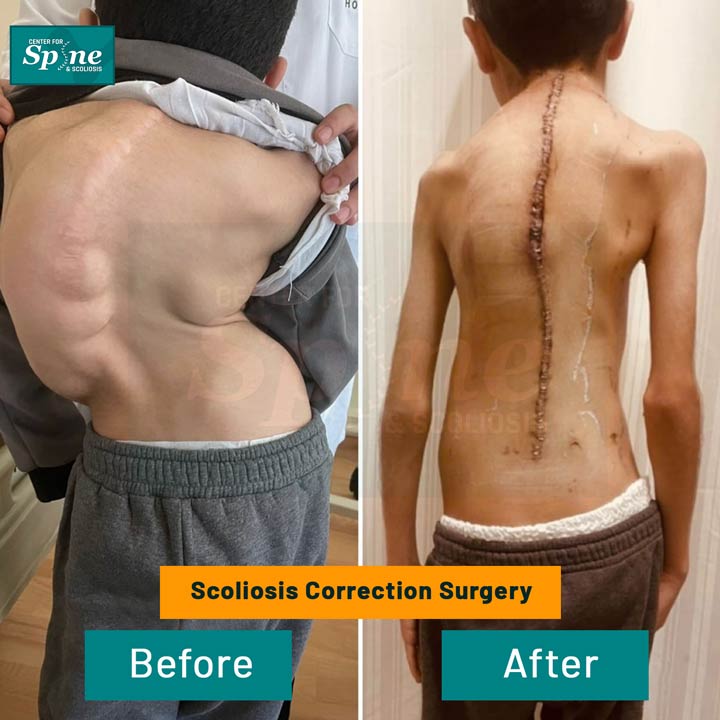
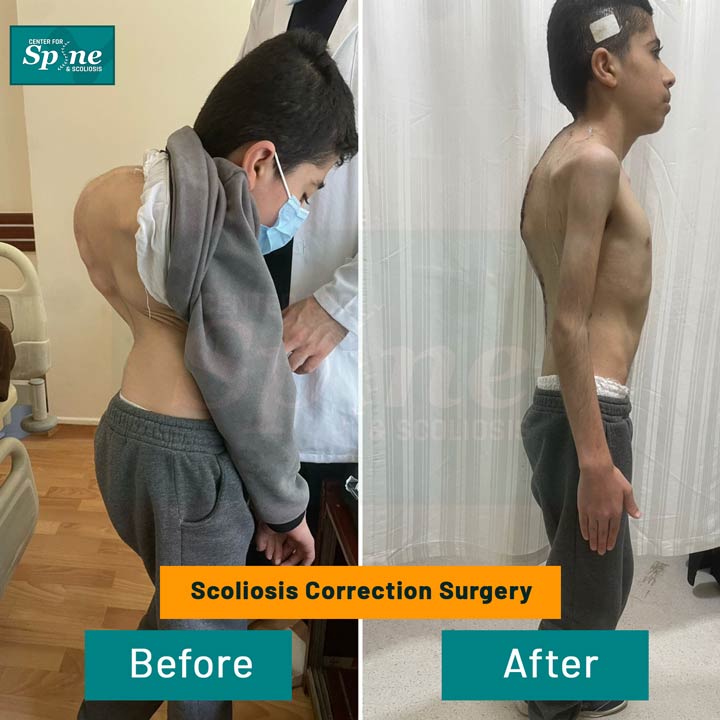
Spinal Fusion surgeries are normally done after the age of 10 or 11 years as by then the torso has grown completely and lung maturation has reached to a reasonable level. Spinal Fusion surgeries provide a permanent solution as they hold the curve in corrected position and does not allow future worsening of the curve.
This is done to correct more serious scoliosis in children who are still growing. The surgeon attaches rods to your spine and ribs with implant. As you grow, the surgeon adjusts the length of the rods. Patient does not experience any significant discomfort while adjustments of the hardware. This technique requires regular inter-spaced distraction off the device as the correction is a gradual process and takes up too many years. In this type of correction Fusion is not done and the child continues to grow at the torso as well. This type of procedure has a particular advantage as it also provides space for the lung to grow.
If the curve (cobb's angle) is less than 40 Degrees it can be fully corrected by just bracing and exercises. However if the curve is more than 40 Degrees it requires surgery in the form of spinal fixation (putting screws & rods) , derotation of bones, curve/deformity correction and sometimes bone cutting procedure known as osteotomy is required as well.
Scoliosis is a sideways curve in your backbone (or spine). Often, it first shows up when you're a child or teenager. The angle of the curve may be small, medium or large. But anything that measures more than 10 degrees on an X-ray is considered scoliosis. Doctors may use the letters "C" and "S" to describe the curve. Normally small curve is less than 60 degrees, medium between 60-90 degrees and large is more than 90 degrees. scoliosis may be as a result of Bony defect (called as congenital scoliosis) or as a result of nerve or muscle problem (called as neuromuscular scoliosis) or there may not be any underlying pathology at all.(called as idiopathic scoliosis. )
Kyphosis is a spinal condition in which, the spine curves forward more than it should ( more than 60 degrees). As a result, the upper back looks overly rounded. The curvature can make people looked hunched or slouching. People sometimes call it ‘hunchback’ or ‘round back’. It is mostly because of infection or some fracture or some form of Bony abnormality like fused vertebra or incompletely formed vertebra in the spine. Sometimes kyphosis can be because of age related weakening of the vertebras and age related Bony fractures in the spine.
Kyphoscoliosis is a combination of outward curvature (kyphosis) and lateral curvature (scoliosis) of the spine.
Common treatments for spinal deformity from non-surgical to surgical include:
Surgery for a spinal deformity can range from minimally invasive to very complex. the length of surgery may vary from 4 hours to 14 hours depending on the complexity of curve and the correction required. some Times the surgery is done in 2 stages, 3 days apart if the surgery includes cutting the bone at the apex of the curve called as vertebral column resection .
Kindly Share Xray/MRI Report with us



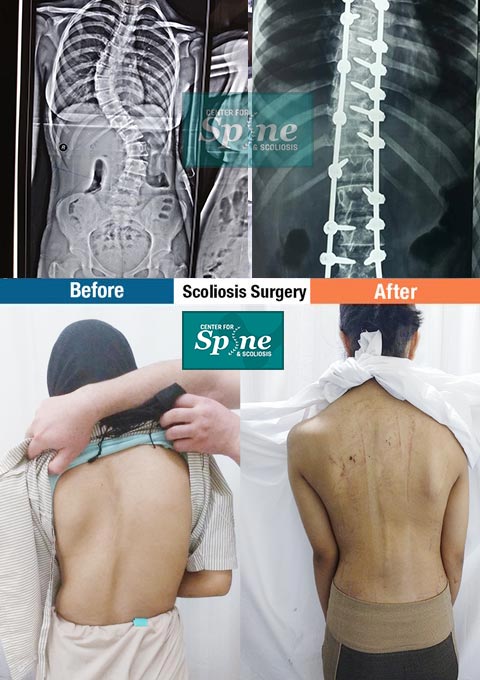
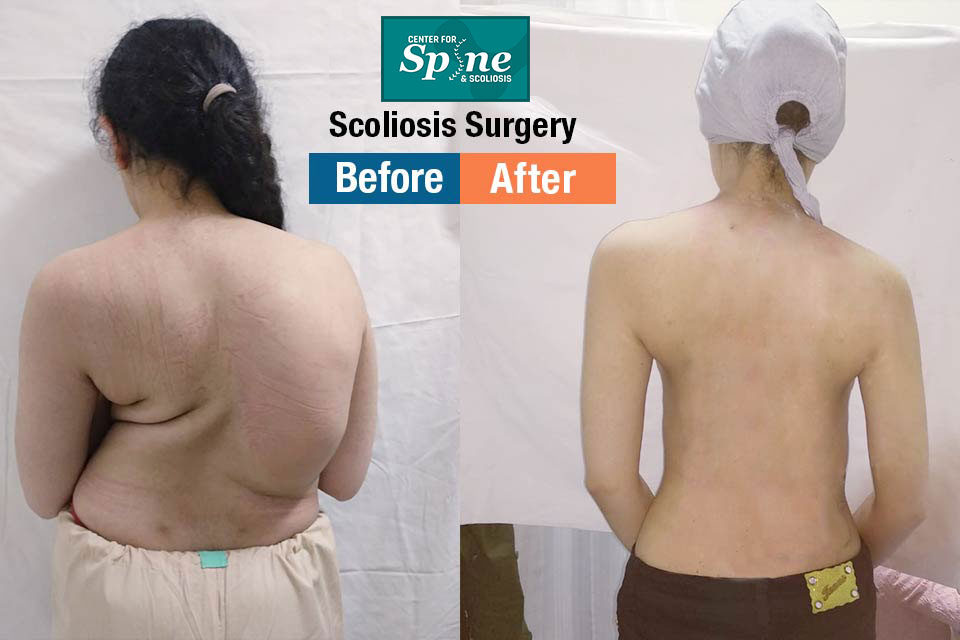
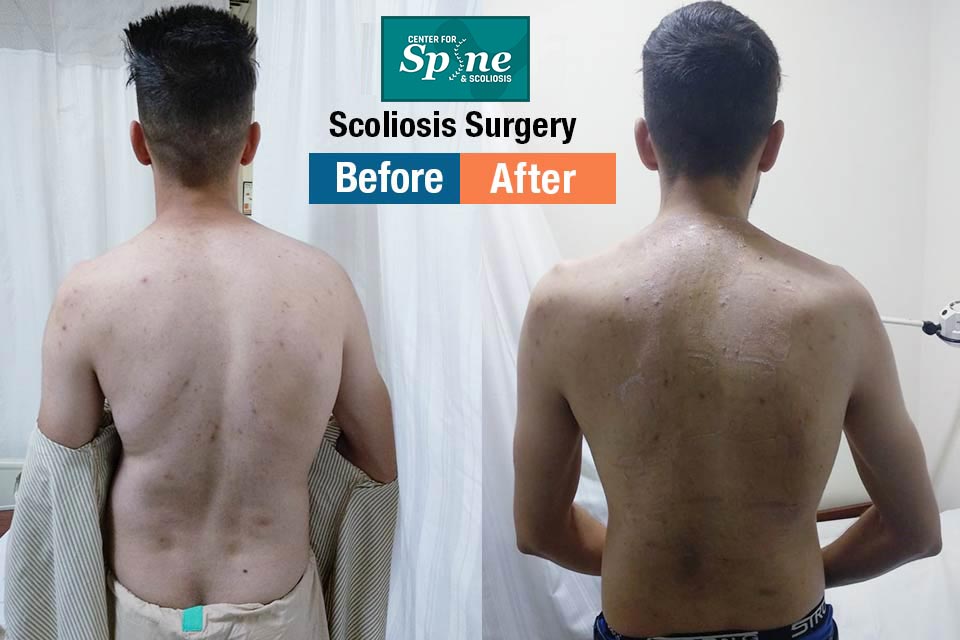
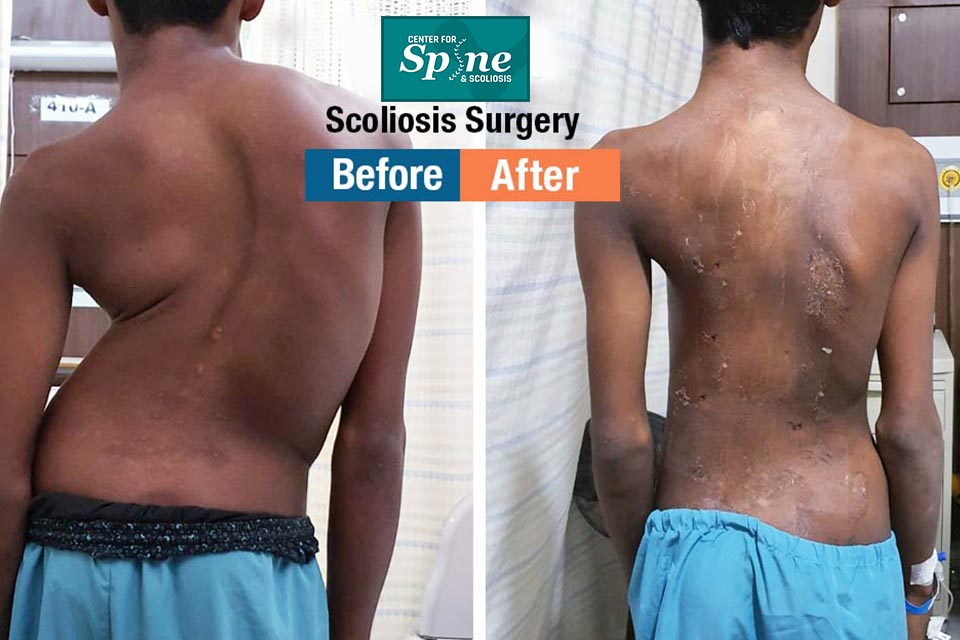
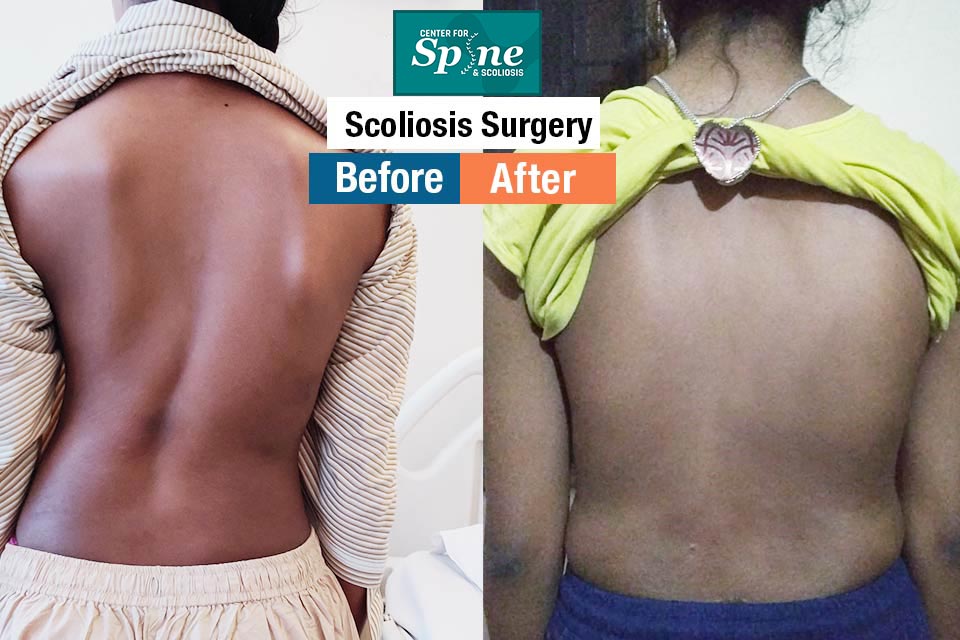
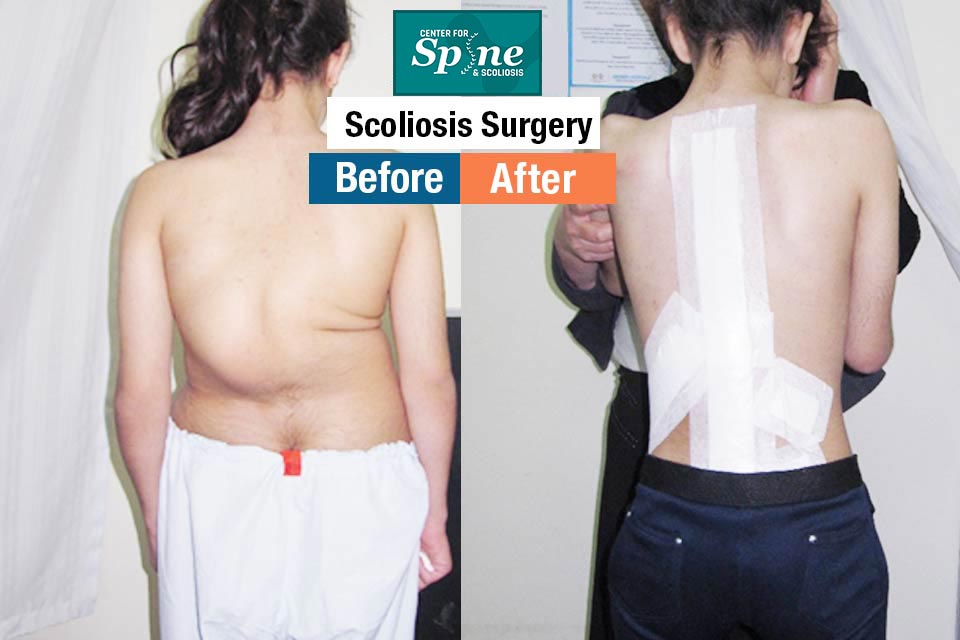
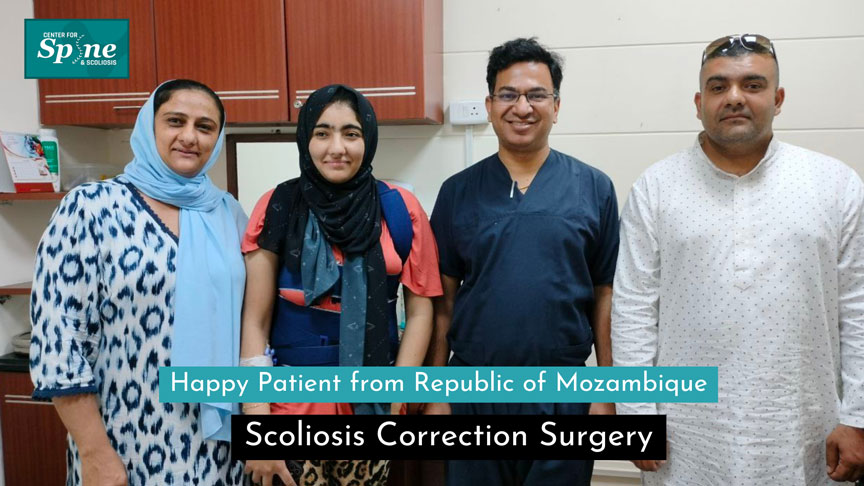
Happy Patient From Republic of Mozambique Sharing Moments Post Scoliosis Correction Surgery!
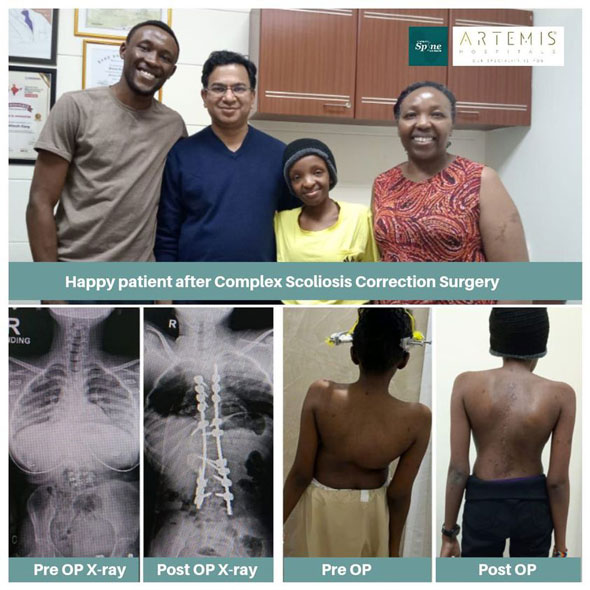
16 year old girl was suffering from congenital scoliosis due to #hemivertebra.
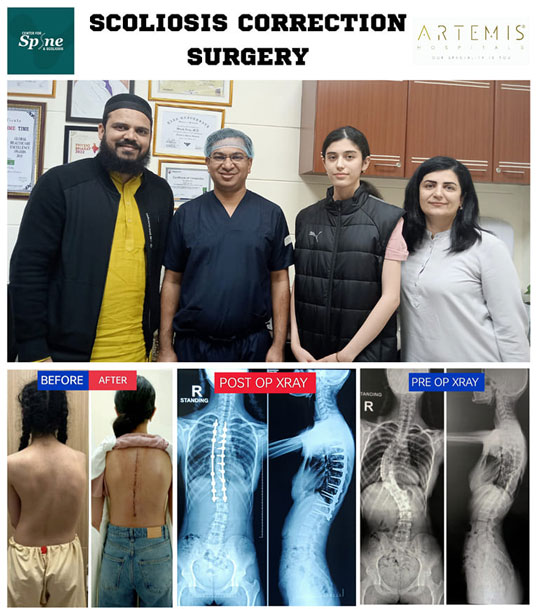
Since birth due to bony abnormalities (half formed, fused bones or absent bones). Congenital scoliosis occurs in only 1 in 10,000 new borns and is much less common than idiopathic scoliosis which usually becomes evident in adolescence. Congenital scoliosis may also be associated with sagittal plane abnormalities such as kyphosis and lordosis. Congenital scoliosis is normally fast growing and more rigid in presentation as compared to idiopathic scoliosis. Also congenital scoliosis requires surgery at a much earlier age (normally between 3 to 5 years) and often requires a Bony procedure for correction
It is a spinal curvature that develops secondary to some kind of neurological or muscular disease, such as muscular dystrophy or cerebral palsy. This form of scoliosis tends to progress much more quickly than others. The curves of neuromuscular scoliosis can be of flaccid or rigid type depending on the underlying pathology of the curve. The curve may eventually deform the bones and press the nerves in long run. the type of curves in neuromuscular scoliosis are long C or S shape curves with pelvic ( in case of rigid neuromuscular scoliosis). These curves are rapidly progressing and require surgery at a much earlier age as compared to idiopathic scoliosis
By far the most common form of scoliosis, adolescent idiopathic scoliosis affects as many as 4 out of 100 children between the ages of 10 and 18. The name for this condition comes from the age of onset (adolescence) and the fact that no single cause has been identified.
By the age of 10, spinal growth has started to slow; if the child has already developed a significant degree of spinal curvature by this point, the curve may continue to progress into adulthood. Whey e recommend a surgery for idiopathic scoliosis after the age of 10 years. It is important to understand here that the surgery is recommended earlier in case of female child as their growth spurt is earlier as compared to male child. For some reason adolescent idiopathic scoliosis is more common in females as compared to males.
Also known as adult onset scoliosis, late onset scoliosis, or de novo scoliosis, degenerative scoliosis is characterized by a sideways curvature of the spine that develops slowly over time. One of the natural consequences of aging is degeneration of the joints and discs in the spine. (In younger individuals, facet joints function like hinges, helping the spine to bend in a smooth motion with intervertebral discs to cushion the individual bones.) Uneven degradation of these discs and joints can cause spinal curvature to become more pronounced on one side – a hallmark of scoliosis. This type of scoliosis rarely requires surgery, but if required it normally requires fixationhey of the lower spine area called as lumbar spine and sometimes need extension into the pelvis as well.
scoliosis surgety is typically classified as a major. Surgery lasts between 6 to 8 hours.
Patient start walking the next day. But they have to wear brace and refrain from active exercises for nearly 3 months. Sports can be started at 6 months. Patient may experience some pain up to 3 weeks of surgery. Most of the patients are pain free by the end of first month. Patient is not allowed to bend forward and lift heavy weight up to 3 months after the surgery. Most of our patients are able to get back to active and healthy life by the end of 3 months.
Every patient’s recovery journey is different, so take this timeline with a pinch of salt and listen to your surgeon – they’ll give you the best idea of what to expect in the weeks and months following surgery.
Generally the patient gets discharged from the hospital within 3-7 days if there are no complications.
Although they need rest for a few initial days, your physiotherapist would assist you to make you stand and walk for a short distance on the very next day of surgery, followed by which, you should be able to perform some small daily tasks that don’t require bending or lifting within a week!
At home instructions are given at the time of discharge from the hospital including the schedule of exercises, diet plan, medications etc.
Normally with good wound care, the sutures are removed after 2 weeks from the date of surgery. This is the time when the dressing can be taken and and the patient can have a proper bath.
At the same time, to prevent infection, it is important to keep the area dry and clean.
With efficient physical therapy and rehabilitation, most of the children would go back to schools and adults can start their office work too, with some limitations to be kept in mind, for example – avoid vigorous activities like running, jumping, lifting heavy objects, etc.
Light exercises as per the scheduled shall be continued.
Around 6 weeks post-op, is the time to step up the exercise plan after a proper consult with your surgeon and the physiotherapist.
You might need an Xray at this stage if indicated.
At this stage you must see your surgeon for a final recovery status, and most of the patients can resume nearly all activities (including contact sports) between 6 and 12 months after surgery. This solely depends and varies with every patient.
Recommendation: Always consult your doctor before starting or resuming contact sports and other more extreme activities, such as rock climbing or bungee jumping.
Surgery is painful for first two days and after that the pain gradually starts reducing. Normally the patient is pain free after 3 weeks.
As per the studies people who didn't undergo scoliosis surgery had more pain than people without scoliosis in long run. However, the pain was generally rated as occasional. It did not interfere with working life or with daily activities after surgery.
To minimize pain and discomfort after scoliosis Correction surgery, I advise my patients to bend at the knees and hip as opposed to using their back.
Moderate to severe scoliosis if left untreated can lead to pain and increasing deformity with age. It can even lead to potential heart and lung damage.
Since Scoliosis is a sideways curve of the spine with rotation element. It grows most rapidly during the growth spurt just before puberty. (10-15 years).
So far in our hands the success rate is almost 100%. We have not had a single case ending in paralysis so far. The surgical correction of the curve is between 80% to 100%. And patient satisfaction rate is close to 100%.
All of our patients start walking the next day of surgery. normally the patients become independent in their activities by two weeks of surgery
surgery in adulthood for scoliosis may not eliminate all symptoms. But in high percentage of cases it can effectively balance the spine, relieve scoliosis symptoms, and improve overall quality of life.
There is a a small chance of paralysis during scoliosis surgery. But we routinely use neuromonitoring and 3D bone reconstruction during all our scoliosis surgeries. This gives us almost hundred percent success rate in all our surgeries.
Yes for full three months after surgery.
Not directly. But yes, surgery can improve it.
You will not be allowed to bend forward for 3 months after scoliosis correction surgery. However after 3 months you will be taught spinal exercises and ways to bend forward.
Degeneration or aging of the discs and joints of the spine occurs asymmetrically, causing tilting and even slipping between the vertebrae. As this cascades from one level to the next, a curve of the spine can develop. This form of scoliosis primarily affects the lumbar spine.
Pain is maximum within two days of surgery. however the pain goes on decreasing slowly post surgery in majority of the patients. Mostly patients are comfortable after 2 weeks of the surgery. pain totally vanishes around three to four weeks after surgery.
Majority of the patients have a normal life after scoliosis surgery in terms of walking, running, sitting, standing ,sexual activities, driving and recreational stuff.
Jogging and running are fine for most people with scoliosis after 8 months of surgery
Scoiliosis correction surgery: Scoliosis is the sideways bending or curvature of the spine. Typically present in children and young adults. Those who have curve beyond 45 degrees are considered for corrective surgery.
The surgery involve complex multiple procedures like corrective osteotomy of spine at one or multiple level or vertebral resection. Metallic screws and rods are used to correct the remaining curvature and hold it in correct position until a bone graft, placed at the time of surgery, consolidates and create permanent rigid fusion. The surgery is done under continuous neuromonitoring so as not to damage the spinal cord or nerve during the correction.
With the use of latest advancements and instruments this surgery has become very safe in our expert hands and gives very gratifying results.
feel free to contact us!